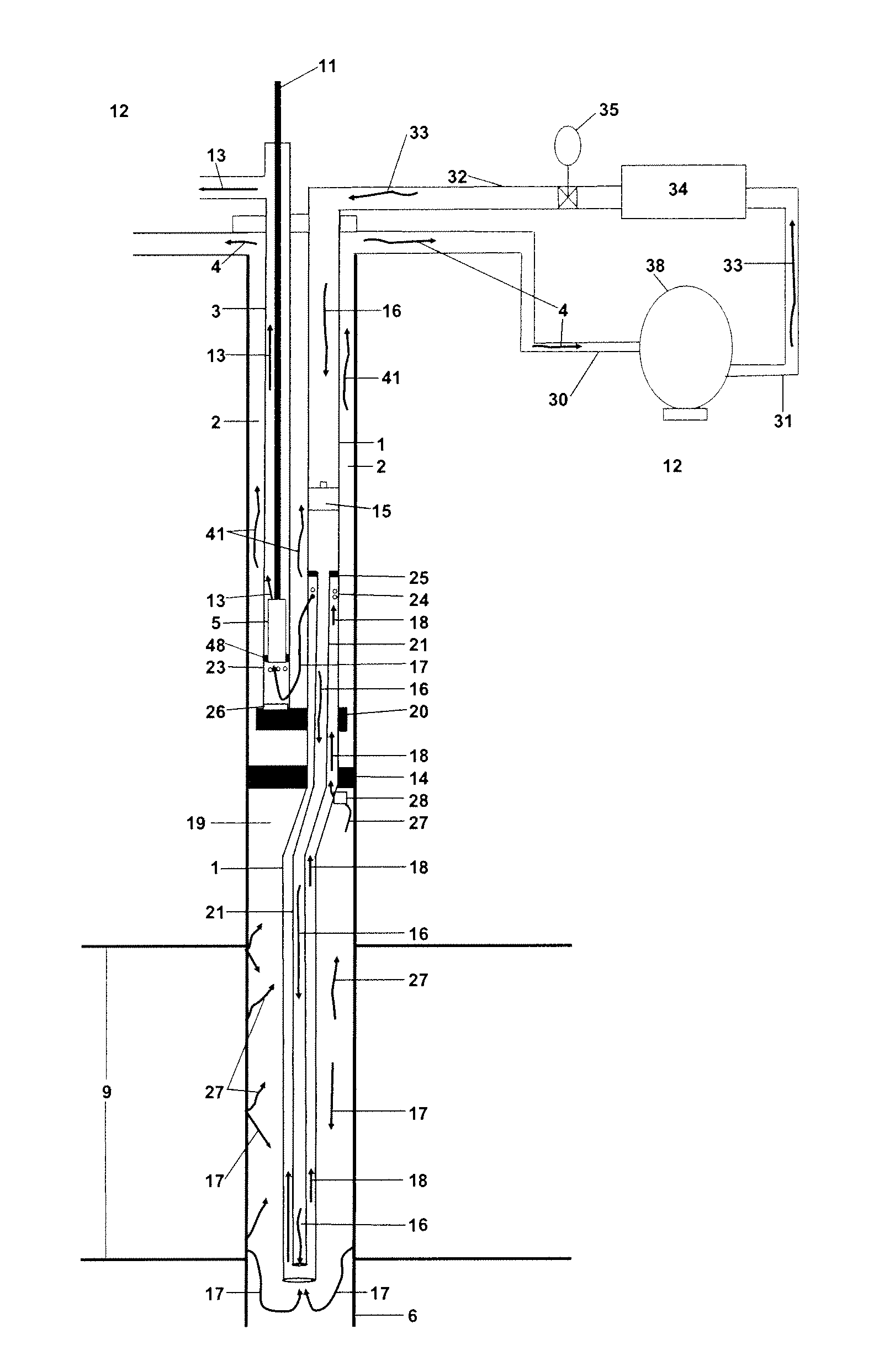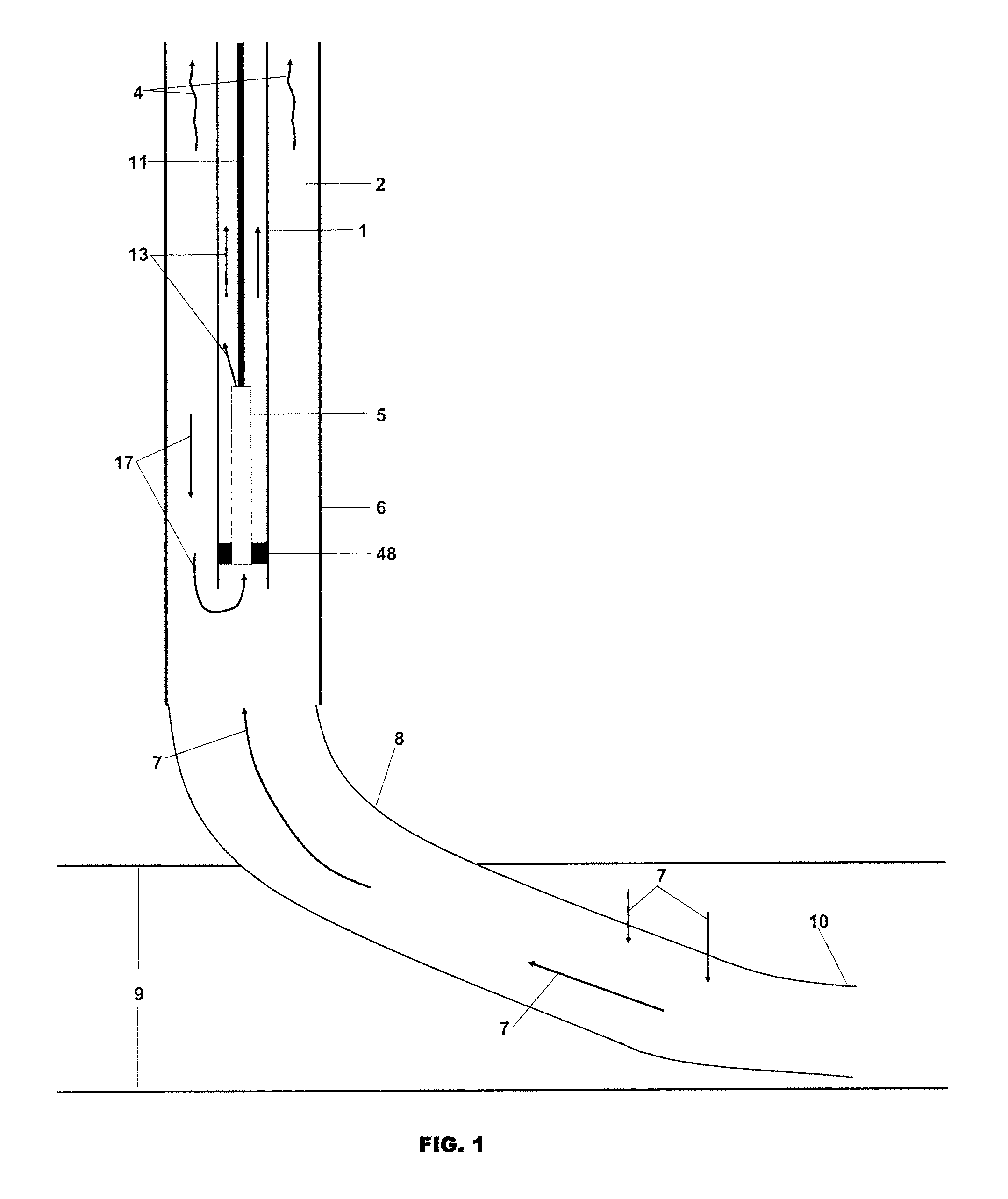System and method for production of reservoir fluids
- Summary
- Abstract
- Description
- Claims
- Application Information
AI Technical Summary
Benefits of technology
Problems solved by technology
Method used
Image
Examples
Embodiment Construction
FIG. 1 shows one example of a conventional rod pump system of the prior art in a directional or horizontal wellbore. As set out in FIG. 1, tubing 1, which contains pumped liquids 13 is mounted inside a casing 6. A pump 5 is connected at the end of tubing 1 in a seating nipple 48 nearest the reservoir 9. Sucker rods 11 are connected from the top of pump 5 and continue vertically to the surface 12. Casing 6, cylindrical in shape, surrounds and may be coaxial with tubing 1 and extends below tubing 1 and pump 5 on one end and extends vertically to surface 12 on the other end. Below casing 6 is curve 8 and lateral 10 which is drilled through reservoir 9.
The process is as follows: reservoir fluids 7 are produced from reservoir 9 and enter lateral 10, rise up curve 8 and casing 6. Because reservoir fluids 7 are usually multiphase, they separate into annular gas 4 and liquids 17. Annular gas 4 separates from reservoir fluids 7 and rises in annulus 2, which is the void space formed between t...
PUM
 Login to View More
Login to View More Abstract
Description
Claims
Application Information
 Login to View More
Login to View More - R&D
- Intellectual Property
- Life Sciences
- Materials
- Tech Scout
- Unparalleled Data Quality
- Higher Quality Content
- 60% Fewer Hallucinations
Browse by: Latest US Patents, China's latest patents, Technical Efficacy Thesaurus, Application Domain, Technology Topic, Popular Technical Reports.
© 2025 PatSnap. All rights reserved.Legal|Privacy policy|Modern Slavery Act Transparency Statement|Sitemap|About US| Contact US: help@patsnap.com



